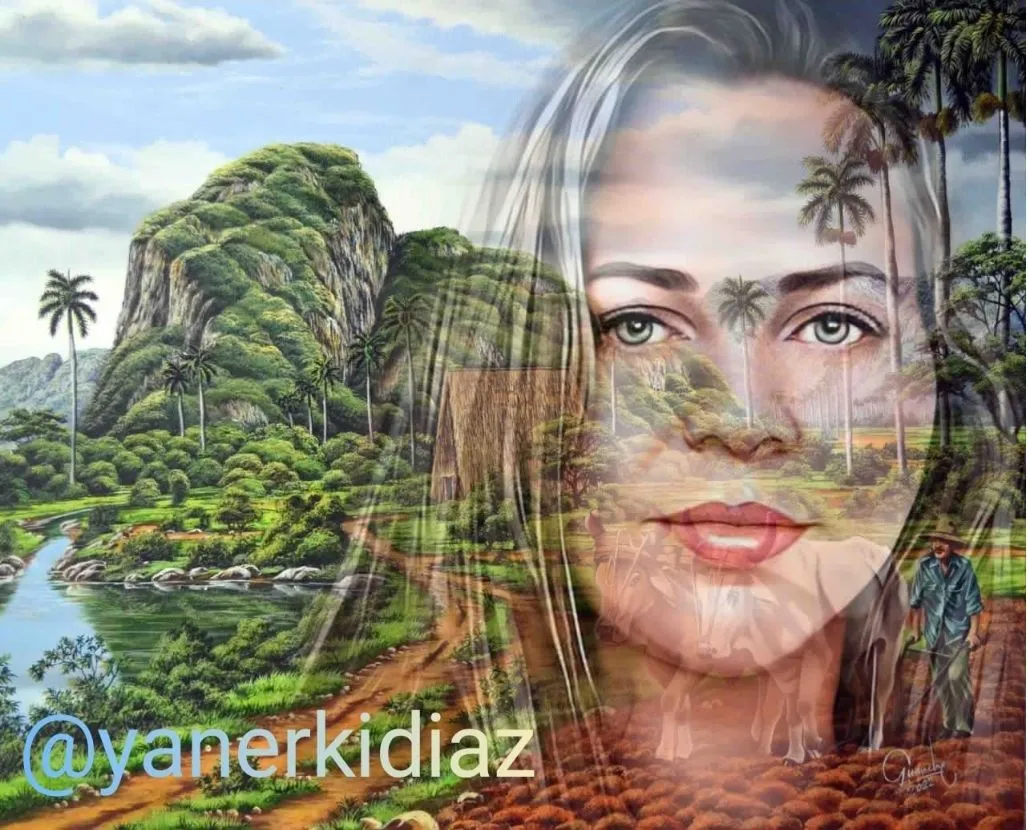
Español
Al terminar la pandemia de Covid 19, al menos en su fase más aguda. Estaba yo ávida de opciones culturales, cómo la mayoría de las personas que estuvimos encerradas en casa. Así que necesitaba exposiciones, tertulias, conciertos, recitales, presentaciones de libros y de repente la llamada de mi amigo el pintor David Santa Fé.
Él, creyendo que soy hábil en asuntos de diseño de póster e invitaciones me indica que le haga el póster para su próxima exposición. Yo le dije que lo iba a intentar pero lo cambiaría por el privilegio de que me concediera una entrevista.
Entonces él aceptó pero solo con una condición la entrevista debía ser en décimas. El resultado fueron tres secciones de entrevistas les comparto el resultado así como imágenes de la exposición. Espero les guste nosotros lo disfrutamos mucho.
English
At the end of the Covid 19 pandemic, at least in its most acute phase. I was hungry for cultural options, like most of the people who were locked up at home. So I needed exhibitions, gatherings, concerts, recitals, book presentations and suddenly the call of my friend the painter David Santa Fé.
He, believing that I am skilled in matters of poster design and invitations tells me to make the poster for his next exhibition. I told him I was going to try but I would trade him for the privilege of an interview.
So he agreed but only on one condition, the interview had to be in tenths. The result was three sections of interviews I share with you the result as well as images of the exhibition. I hope you like it, we enjoyed it very much.
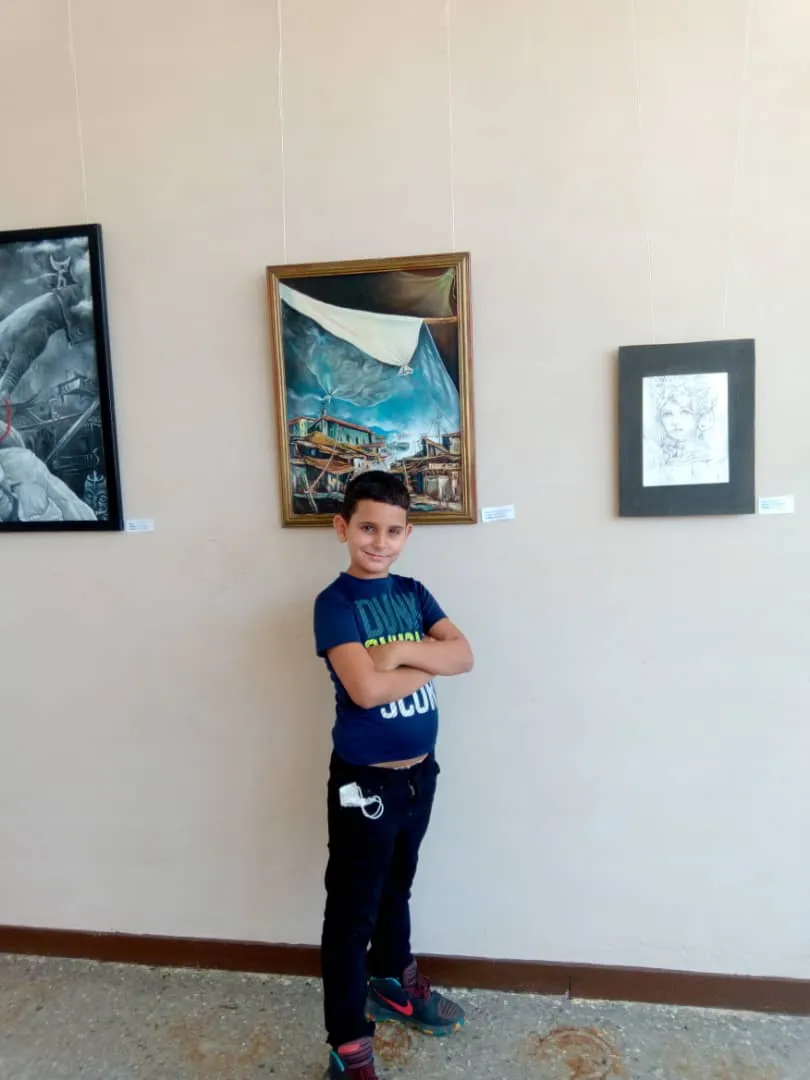
Entrevistadora: Yanerkis Díaz Osuna. Profesora de la Universidad de Pinar del Río. Presidenta de la Cátedra Honorífica Jesús Orta Ruíz.
Entrevistado: David Santa Fe, Artista plástico: pintor, escultor. Decimista, promotor cultural.
Permíteme una entrevista
en versos, querido amigo.
Vamos a ver si consigo
hablar de tu vida artista.
¿Cuál es la protagonista
tierra que te vio nacer?
¿Qué fecha tuvo el placer
de recibirte, qué escuela?
Enamora la espinela,
y anímate a responder.
Cuéntame del niño inquieto
que andaba por la sábana
robándole a la mañana
sus colores. ¿Qué secreto
te dieron como amuleto
las palmas del veguerío?
¿Rompiste el cristal del río
de la mano de tus padres?
¿Cuándo es que al arte te abres
me dices amigo mío?
¿Maestro en qué ocasión
le diste a la luna un beso
que en el sublime embeleso
te premió con la creación
del arte, con la pasión
por las sombras, los colores?
Ella puso en ti fulgores
y el sol celoso en su cumbre
no hay día que no te alumbre
con exquisitos verdores.
Interviewer: Yanerkis Díaz Osuna. Professor at the University of Pinar del Río. President of the Jesús Orta Ruíz Honorary Chair.
Interviewee: David Santa Fe, Plastic artist: painter, sculptor. Decision maker, cultural promoter.
Allow me an interview
in verse, dear friend.
Let's see if I can
to talk about your life as an artist.
What is the protagonist
land where you were born?
What date had the pleasure
to receive you, which school?
Fall in love with the spinel,
and dare to answer.
Tell me about the restless child
who wandered through the sheet
stealing from the morning
its colors. What secret
did they give you as an amulet
the palms of the veguerío?
Did you break the glass of the river
by the hand of your parents?
When is it that you open yourself to art
you tell me my friend?
Master, on what occasion
did you give the moon a kiss
that in the sublime rapture
rewarded you with the creation
of art, with the passion
for the shadows, the colors?
She put in you gleams
and the jealous sun on its summit
there is no day that does not illuminate you
with exquisite greens.
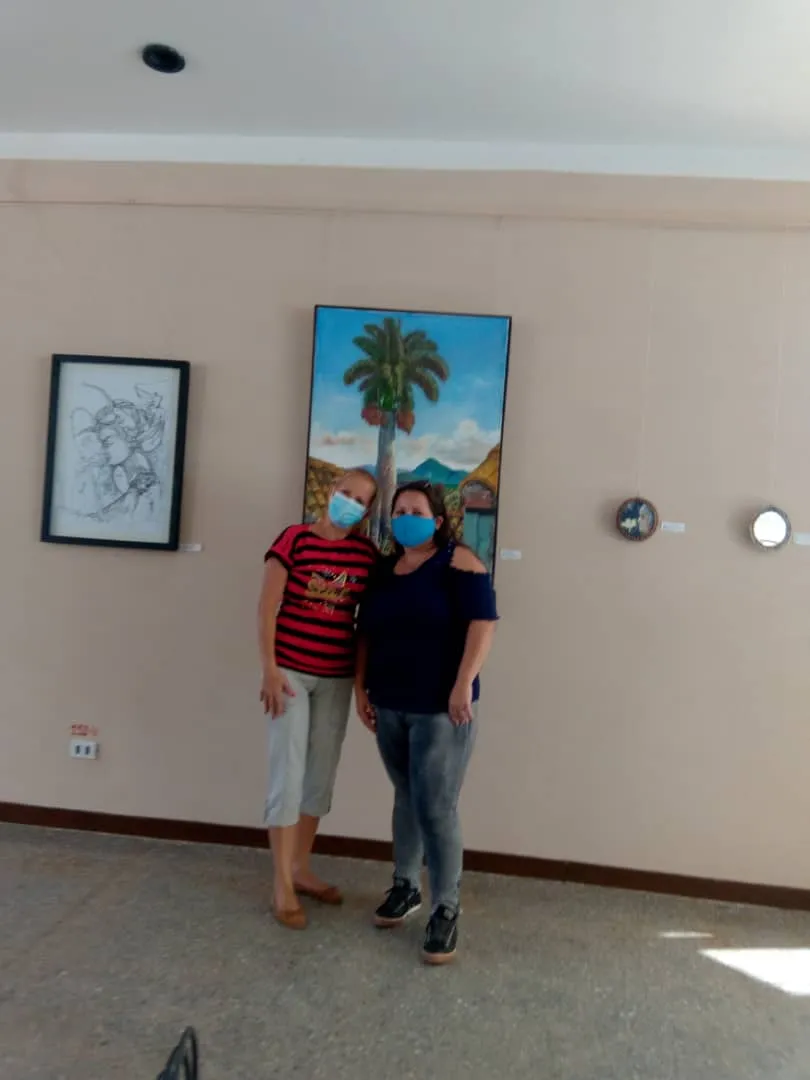
Respuesta I
Yanerkis tu reto ahora
Me ha puesto en tremendo apuro.
Aunque entiendo que esta “duro”
te respondo sin demora.
¡Una entrevista! ¡Señora!.
Eso rompe la rutina
de mi verso que camina
como torpe buscador
entre el poeta, el pintor
y la rima campesina.
Te cuento con emoción
y lo digo con orgullo
que nació este amigo tuyo
en el barrio “El llega y pon”.
Diciembre con el halón
de una arrugada partera;
veintiocho la quimera
del año que ya termina
y mi madre que se inclina
con la primera tetera.
Fue el río un espejo roto
por mi torpe chapotear
y en el afán de nadar
fue mi primera foto
en algún lugar remoto
de mi remota niñez.
Mi padre un blando juez:
en un reloj de saliva
marcaba el tiempo que iba
a sentirme como un pez.
La escuela José Martí
y el susto del crecimiento:
hoy todavía lamento
el kínder que me perdí.
La novia que pretendí
sin que nunca se enterara.
Sexto grado que es la cara
de mi eterna vocación:
el hijo del llega y pon
que a las musas se declara.
Answer I
Yanerkis your challenge now
You have put me in tremendous trouble.
Although I understand that it is "hard"
I answer you without delay.
An interview! Madam!
That breaks the routine
of my verse that walks
like a clumsy seeker
between the poet, the painter
and the peasant rhyme.
I tell you with emotion
and I say it with pride
that this friend of yours was born
in the neighborhood "El llega y pon".
December with the halon
of a wrinkled midwife;
twenty-eight the chimera
of the year that is already ending
and my mother who bows
with the first teapot.
The river was a broken mirror
by my clumsy splashing
and in the eagerness to swim
was my first photo
in some remote place
of my remote childhood.
My father a soft judge:
on a watch of spit
he marked the time I was going
to feel like a fish.
The José Martí School
and the fright of growing up:
today I still regret
the kindergarten I missed.
The girlfriend I pretended
without her ever finding out.
Sixth grade that is the face
of my eternal vocation:
the son of the come and get
who declares himself to the muses.
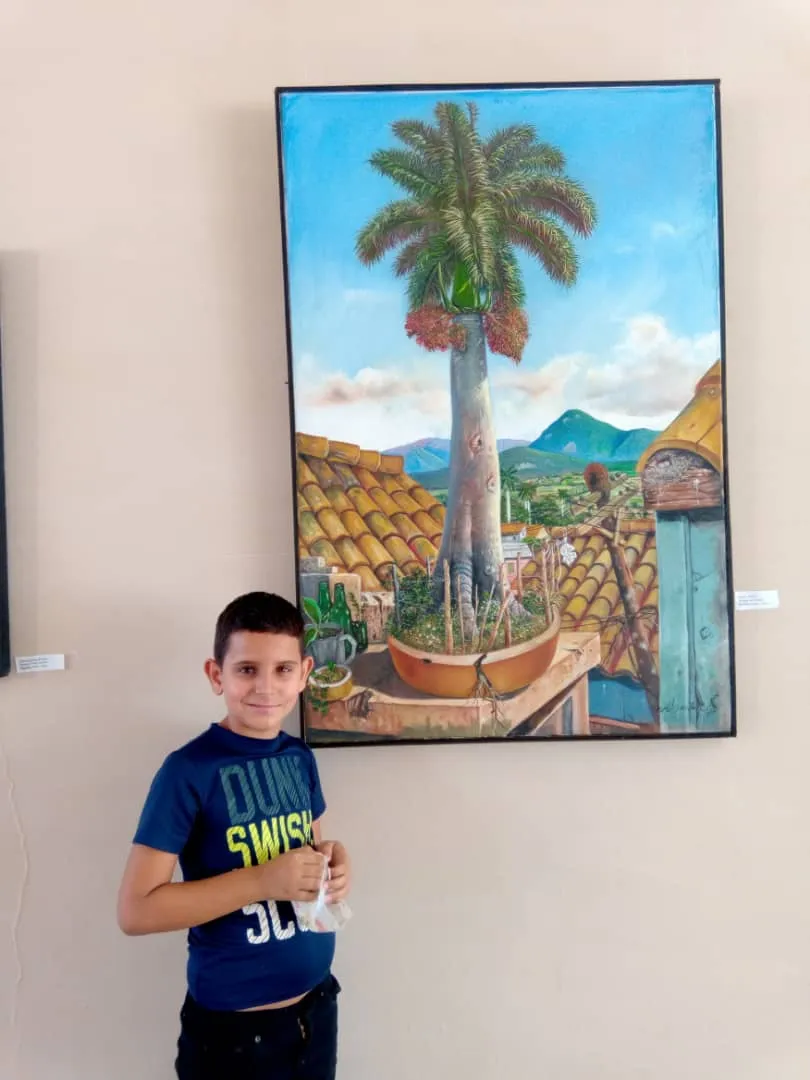
Entrevista II
El hijo del Llega y pon
es hoy el protagonista
de una modesta entrevista
salida del corazón
del pueblo. Con emoción
ha recibido mi verso
por eso con él converso
así develo el misterio
de su excelso magisterio
descifrando su universo.
¿Acaso había en tu casa
algún pintor que te diera
nociones, que te dijera
como se mezcla y se traza?
¿Cómo hacer una argamasa
para construir un sueño
en un cuadro? Fue pequeño
cuando una musa traviesa
se te metió en la cabeza
y te volviste su dueño?
¿Dónde creciste guajiro,
entre pinceles y arado?
Rebelde y enamorado
profundo como un suspiro.
Con tus musas yo conspiro
para juntas preguntarte:
¿qué es lo que inspira tu arte
qué escena pintar prefiere
tu mano y qué la hiere?
¿Qué logra a ti impresionarte?
Interview II
The son of the Llega y pon
is today the protagonist
of a modest interview
from the heart
of the people. With emotion
he has received my verse
that is why I converse with him
so I unveil the mystery
of his sublime magisterium
deciphering his universe.
Was there in your house
some painter who gave you
notions, to tell you
how to mix and trace?
How to make a mortar
to build a dream
in a painting? It was small
when a mischievous muse
got into your head
and you became its owner?
Where did you grow up guajiro,
between brushes and plow?
Rebellious and in love
deep as a sigh.
With your muses I conspire
to ask you together:
what inspires your art
what scene does your hand prefer to paint
your hand and what hurts it?
What impresses you?
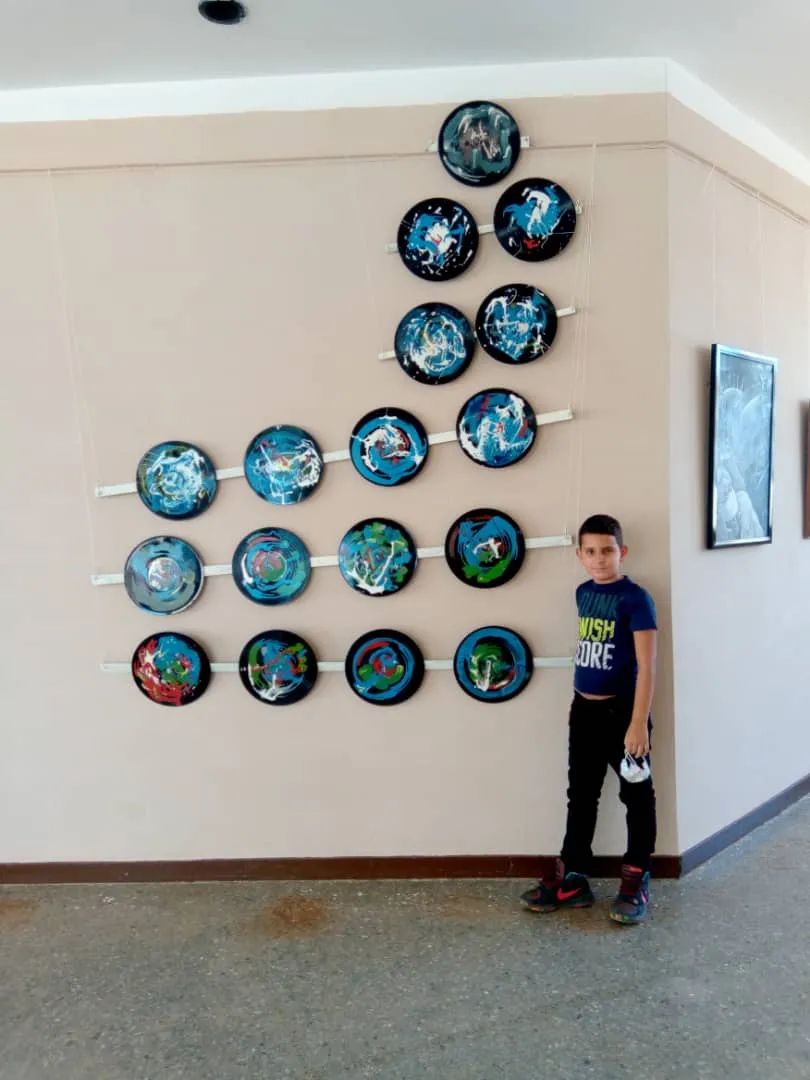
Respuesta II
El hijo del llega y pon
puede ser, no me incomoda
si en un canto, en una oda
resaltan mi creación.
Así empezó la cuestión,
cuando un día me inventé
el nombre con que llegué
A la masa popular
y me dicen al pasar:
ahí va David Santa Fe.
Yo crecí dentro de un sueño
y sigo creciendo aún
más libre que un zunzún
y siendo mi propio dueño.
El tiempo me frunce el seño
porque rebelde lo ignoro:
las musas me hacen coro
en el dintel del parnaso
y en el arte paso a paso
convierto el carbón en oro.
Yo tuve de referente
como pintor a mi padre
que en el lienzo de mi madre
pintaba constantemente.
un dibujo diferente
hizo mi viejo al azar
sin poder imaginar
que de aquel tronco guajiro
más profundo que un suspiro
iba este artista a crear.
La fuente de inspiración
yo no sé dónde la tengo:
aun no sé de dónde vengo
en esta reencarnación.
Los temas que pinto son:
la amalgama indefinida
de una historia que en la ida
y la vuelta del quehacer
marcaron en mí el querer
ser artista de por vida.
Answer II
The son of the come and pon
may be, it doesn't bother me
if in a song, in an ode
they highlight my creation.
That's how the matter began,
when one day I invented
the name with which I arrived
To the popular mass
and they say to me as I pass by:
there goes David Santa Fe.
I grew up in a dream
and I'm still growing
freer than a zunzun
and being my own master.
Time frowns at me
because I ignore it rebelliously:
the muses chorus me
at the lintel of Parnassus
and in art, step by step
I turn coal into gold.
I had as a reference
as a painter to my father
who on my mother's canvas
he painted constantly.
a different drawing
my old man made at random
without being able to imagine
that from that guajiro trunk
deeper than a sigh
this artist was going to create.
The source of inspiration
I don't know where I have it:
I still don't know where I come from
in this reincarnation.
The themes I paint are:
the indefinite amalgam
of a history that in the coming and going
and the return of the task
marked in me the desire
to be an artist for life.
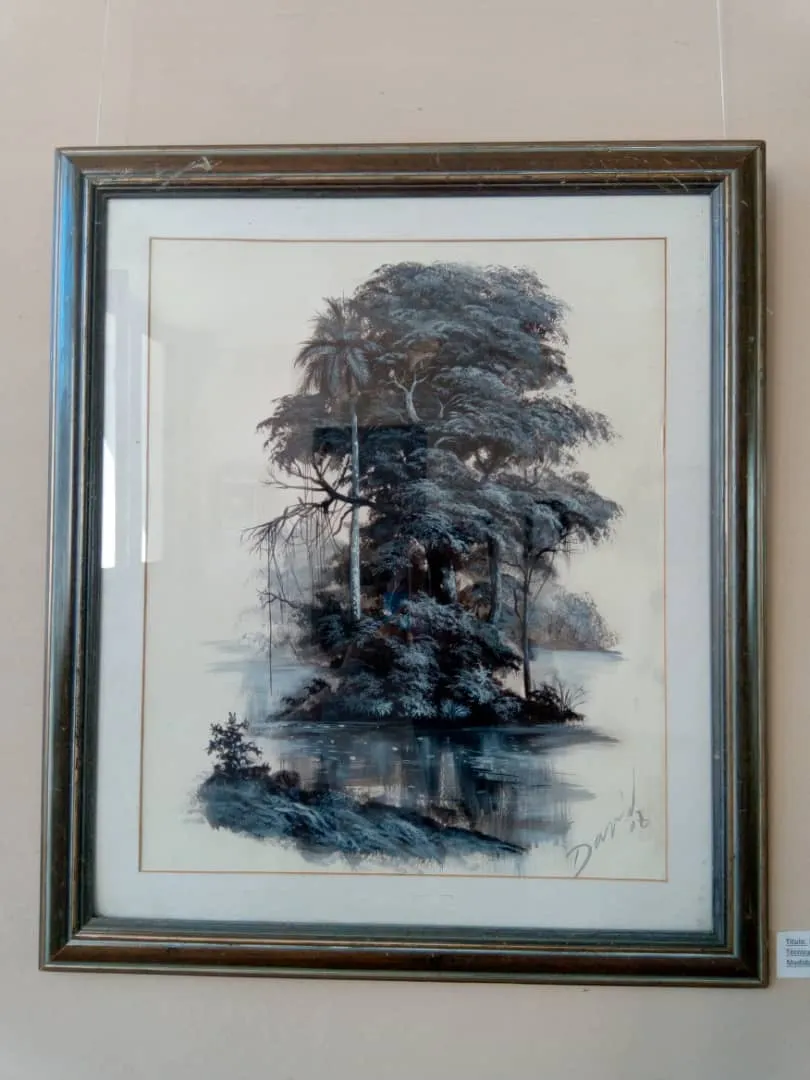
Entrevista III
Es cierto que un día pintaste
la novia antes de tenerla
y cuando pudiste verla,
trigueña cual tú soñaste
pincel, paleta juntaste
con ella y después se fueron?
Qué hermosas piezas hicieron
en el taller de la vida?
En esa historia vivida
cuántos sueños se cumplieron?
Has hecho muchos retratos?
Cuánta gente te ha pedido
que los libres del olvido
haciendo contigo un trato?
A ti te resulta grato
inmortalizar la vida
con una luz en la herida?
Perpetuar algún romance
dejarlo solo al alcance
de dos almas escondidas?
Respuesta III
Esta parte es delicada
porque habla de uno mismo,
ell guardián del egoísmo
entreabre la mirada.
También hablar de la nada
lleva mucha sutileza:
a quien te sirve la mesa,
te lava o tiende la cama
hay que elevarla a la fama
sin apuro y sin pereza.
En un sueño adelantado
allá en la tierra africana
su rostro de luz y grana
en mi quedó dibujado.
Despierto, no está a mi lado,
se evapora la ilusión.
El tiempo pasa, emoción
disfrazada de sorpresa:
ahí está ella quedó presa
como verso en la canción.
En el taller de la vida
lo mismo que en el del arte
la creación fue la parte
más elevada y querida.
Dos retoños: repartida
su savia en cinco nietos
multiplicaron los retos
de aquel sueño adelantado
que en el tiempo ha navegado
por distintos vericuetos.
Ya liberé del olvido
a bastantes inmortales
que por distintos rituales
en el tiempo me han pedido;
pero más hondo he sentido
que yo le he llegado al centro,
si regreso del encuentro
sabiendo que pude hacer
el rostro de una mujer
pero pintado por dentro.
Interview III
It is true that one day you painted
the bride before you had her
and when you could see her,
brunette as you dreamed
brush, palette you joined
with her and then you left?
What beautiful pieces did you make
in the workshop of life?
In that lived history
how many dreams were fulfilled?
Have you made many portraits?
How many people have asked you
to free them from oblivion
by making a deal with you?
You find it pleasing
to immortalize life
with a light in the wound?
To perpetuate some romance
to leave it alone within the reach
of two hidden souls?
Answer III
This part is delicate
because it speaks of oneself,
the guardian of selfishness
a half-open look.
Also to speak of nothingness
is also very subtle:
the one who serves you the table,
washes you or makes your bed
must be raised to fame
without haste and without laziness.
In an advanced dream
there in the African land
her face of light and scarlet
was drawn in me.
I wake up, he is not by my side,
the illusion evaporates.
Time passes, emotion
disguised as surprise:
there she is, she is imprisoned
as verse in song.
In the workshop of life
as in the workshop of art
creation was the highest and
and dearest part.
Two offshoots: its sap
their sap in five grandchildren
they multiplied the challenges
of that advanced dream
that in time has navigated
through various twists and turns.
I have already freed from oblivion
quite a few immortals
who through different rituals
in time have asked me;
but more deeply I have felt
that I have reached the center,
if I return from the encounter
knowing that I was able to make
the face of a woman
but painted inside.
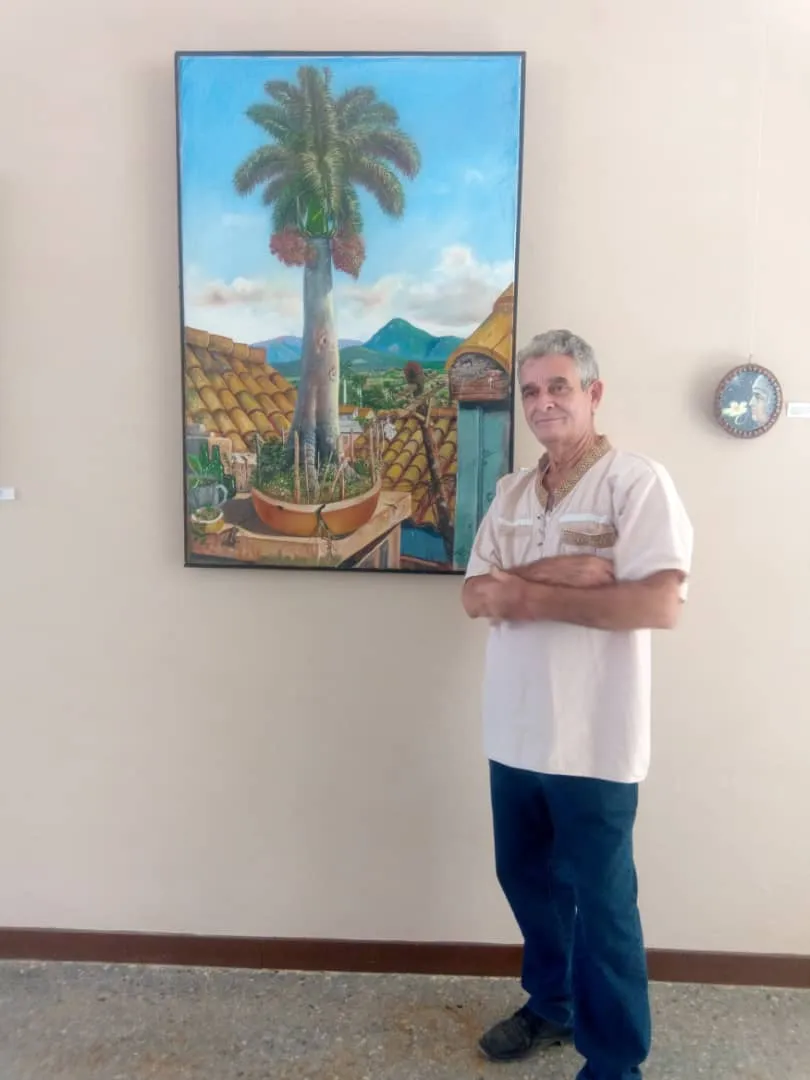
Entrevista IV
Maestro hoy quiero hablarte
de alguna de tus pasiones.
¿Es cierto que en ocasiones
truecas el lienzo del arte
y sueles atrincherarte
en un bicolor tablero?
¿Te eriges en caballero
para defender tu rey?
¿Con apertura de ley
logras un mate certero?
¿Disfrutas de la cocina
o solo de la envoltura
del ángel que en la figura
de tu esposa se adivina?
¿Cuando ella cuece o camina
mezclando sueños, sabores
dibujas tú los olores
y consigues la ambrosía
con excelente armonía
de sazones y colores?
¿En “El ojo de Cibeles”
de Chavarría, en “El monte”
haces tú que se confronte
la lectura y tus pinceles?
¿Portadas de libros sueles
dibujar tú por encargo
o disfrutas del letargo
que un buen libro te provoca?
¿Como Quijote te toca
vencer molinos y largo?
Interview IV
Maestro, today I want to talk to you
about one of your passions.
Is it true that sometimes
you change the canvas of art
and you tend to entrench yourself
in a two-color board?
Do you set yourself up as a knight
to defend your king?
With an opening of law
do you achieve an accurate mate?
Do you enjoy cooking
or only of the envelope
of the angel that in the figure
of your wife is guessed?
When she cooks or walks
mixing dreams, flavors
do you draw the smells
and get the ambrosia
with excellent harmony
of flavors and colors?
In Chavarría's "El ojo de Cibeles
of Chavarría, in "El monte" (The mount)
do you make reading and your brushes
reading and your brushes?
Do you usually draw book covers
do you draw on commission
or do you enjoy the lethargy
that a good book provokes in you?
Like Quixote, do you
to defeat windmills and long?
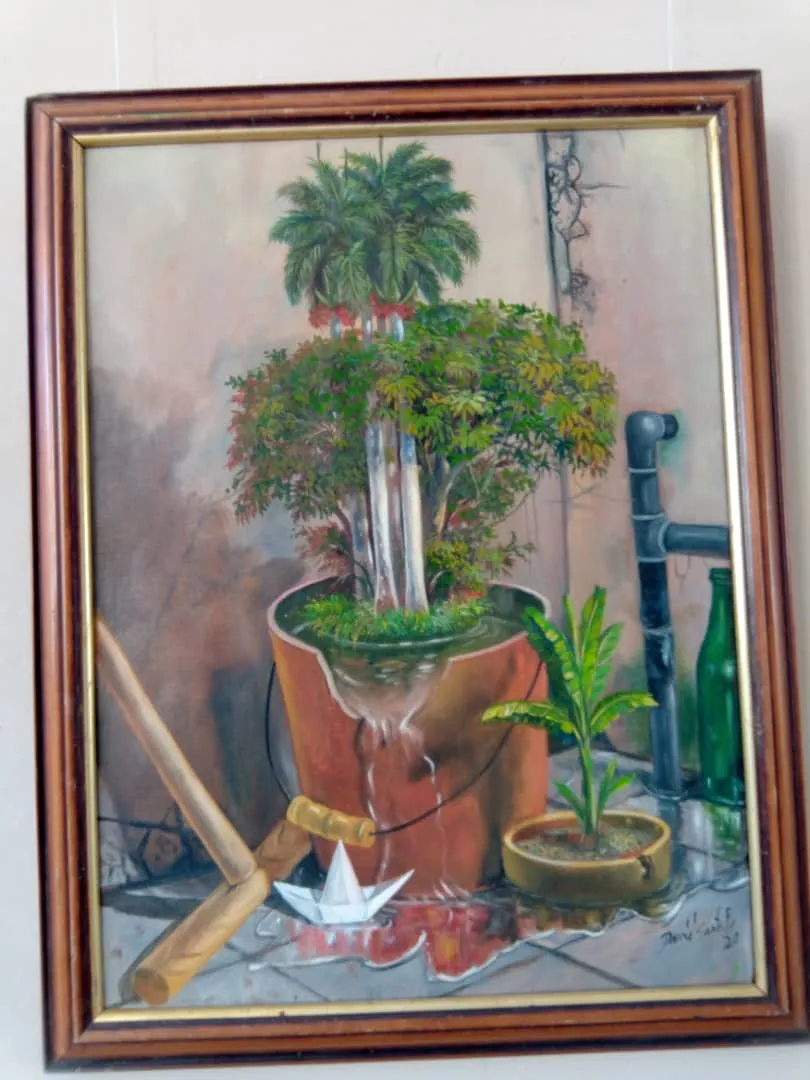
Respuesta IV
Cuando me pongo a pensar
al derecho y al revés
en un juego de ajedrez
la vida suele pasar.
La apertura es el azar
muy sutil del nacimiento,
medio juego es el tormento;
un nudo de situaciones
el final no hay más opciones:
muere el rey, qué más te cuento.
Yo solo entro a la cocina
interior de mi mujer
y allí suelo conocer
la cocinera divina.
Ceno y no pago propina
en vuelo de retirada.
Endulzo con la mirada
una taza de café.
De esa cocina algo se,
de la otra casi nada.
Un libro es la mirada
perpetuada del pasado,
tengo uno lo he ilustrado
con pinceles de la nada.
“El monte” es la entramada
del Iroko prominente:
un tronco de gente ausente
cortejando a la “Cibeles”
febril Ochún de la mieles
en éxtasis permanente.
La cocina el ajedrez
la sazón, otras pasiones
se me funden, son cordones
que me salvan del después.
Armaduras, Quijote es
la empiria donde me enervo:
Un hombre, humilde siervo
que al mismo son del latido
del corazón ha crecido
entre la línea y el verso.
Conclusión de la entrevista
Nació de un vientre guajiro
en las entrañas del monte,
allí lo arrulló un sinsonte
en el campestre retiro.
Su vida tornó en zafiro
azul y verde al mezclar
los sueños, al retratar
las palmas del veguerío.
Con ellas un amorío
eterno que disfrutar.
Answer IV
When I start thinking
backwards and forwards
in a game of chess
life usually happens.
The opening is the very
very subtle of birth,
half a game is torment;
a knot of situations
the end there are no more options:
the king dies, what else do I tell you.
I only enter the kitchen
my wife's interior
and there I usually meet
the divine cook.
I dine and do not pay a tip
in flight of retreat.
I sweeten with my eyes
a cup of coffee.
I know something about that kitchen,
of the other one almost nothing.
A book is the look
perpetuated look of the past,
I have one I have illustrated
with brushes of nothingness.
"The mountain" is the latticework
of the prominent Iroko:
a trunk of absent people
courting the "Cybele"
feverish Ochún of the honeys
in permanent ecstasy.
Cooking, chess
seasoning, other passions
melt into me, they are cords
that save me from the after.
Armor, Quixote is
the empiria where I enervate myself:
A man, humble servant
who at the same sound of the heartbeat
of the heart has grown
between line and verse.
Conclusion of the interview
He was born from a guajiro womb
in the bowels of the mountain,
there he was lulled by a mockingbird
in the country retreat.
His life turned sapphire
blue and green as he mixed
dreams, as he portrayed
the palms of the veguerío.
With them an eternal love affair
eternal love affair to enjoy.
Las fotos son tomadas con mi teléfono Alcatel 1S en la exposición titulada "Desde - Hasta" del pintor David Santa Fe. El niño que sale en las fotos es mi hijo Julio Morejón Díaz.
The photos are taken with my Alcatel 1S phone at the exhibition entitled "From - To" by the painter David Santa Fe. The boy in the photos is my son Julio Morejón Díaz.
